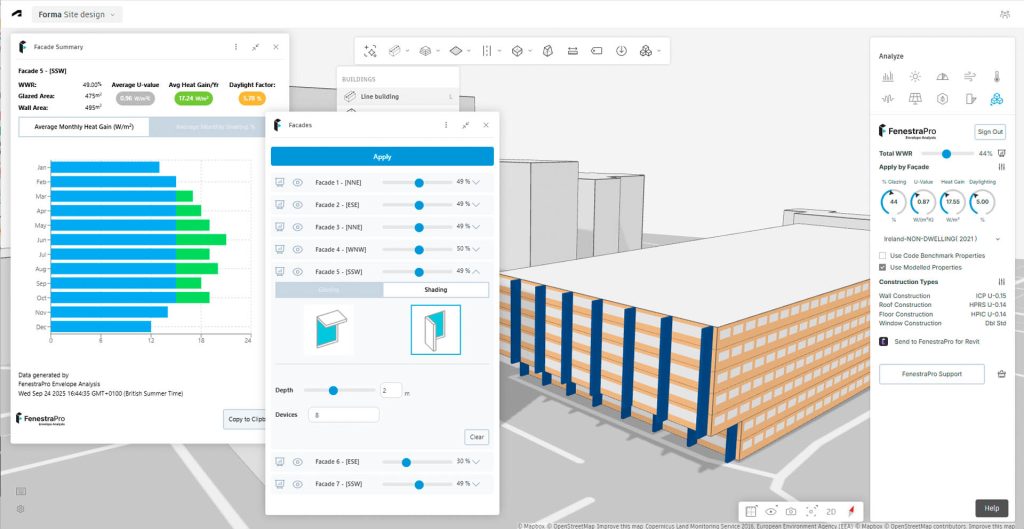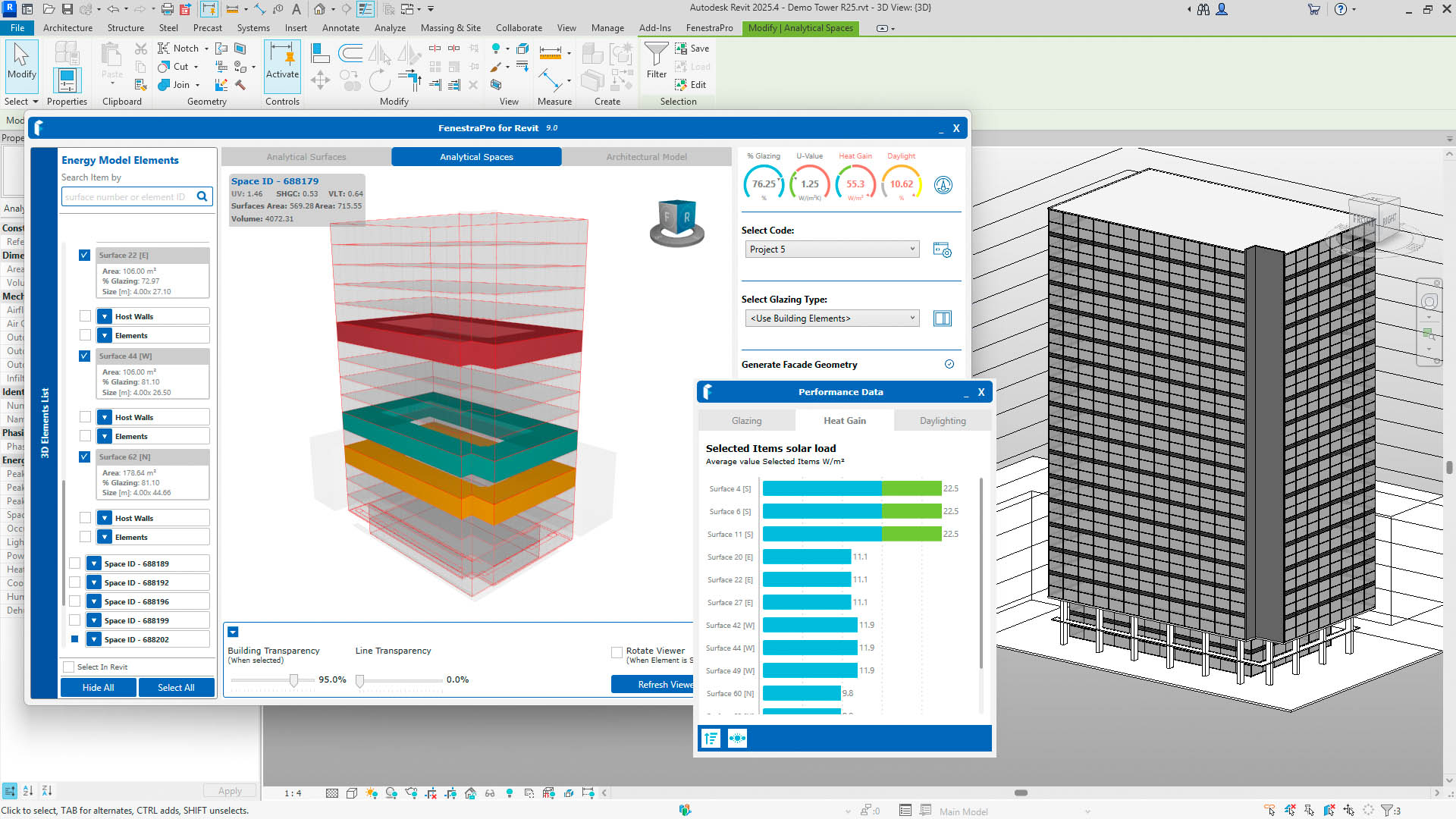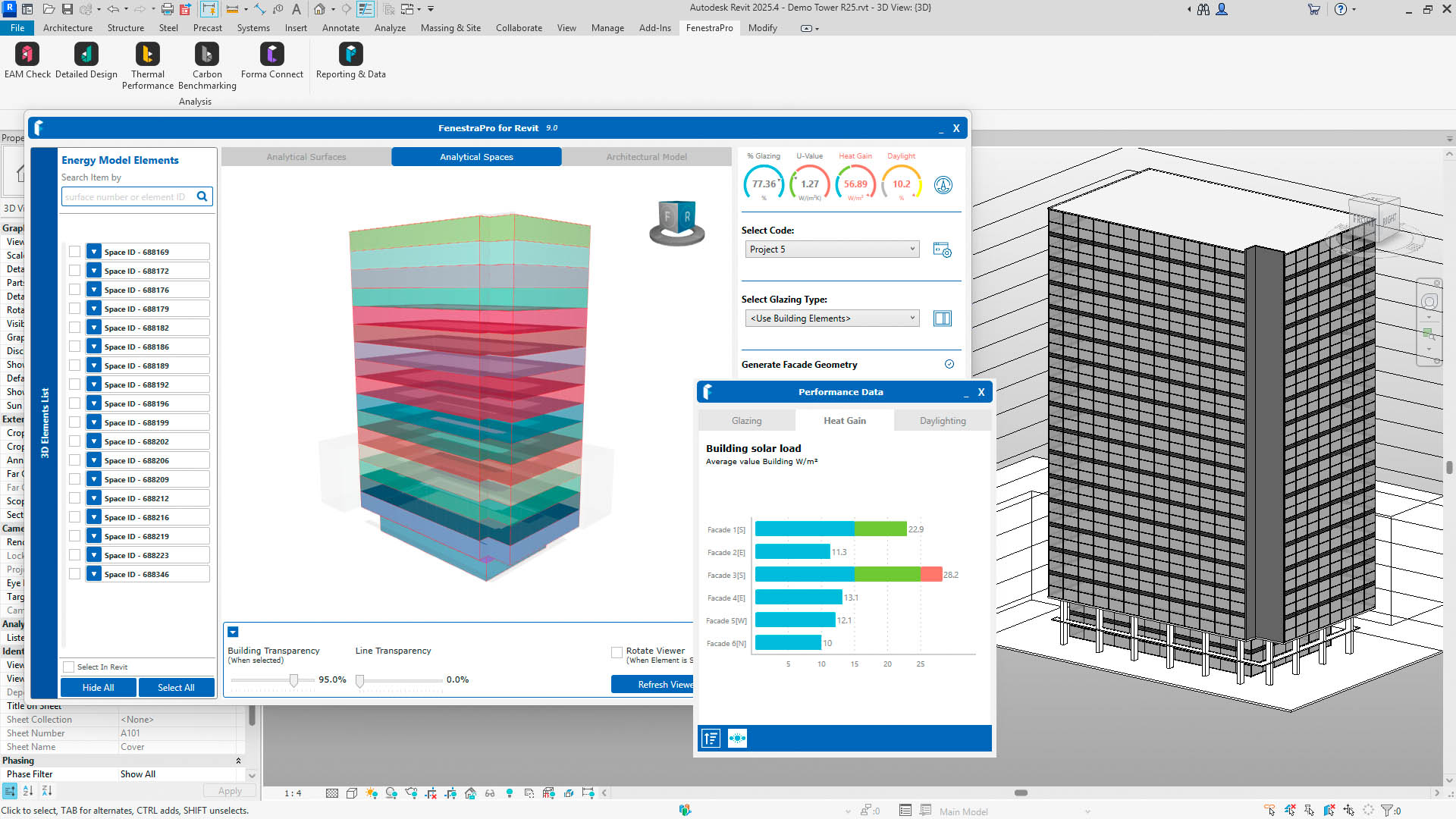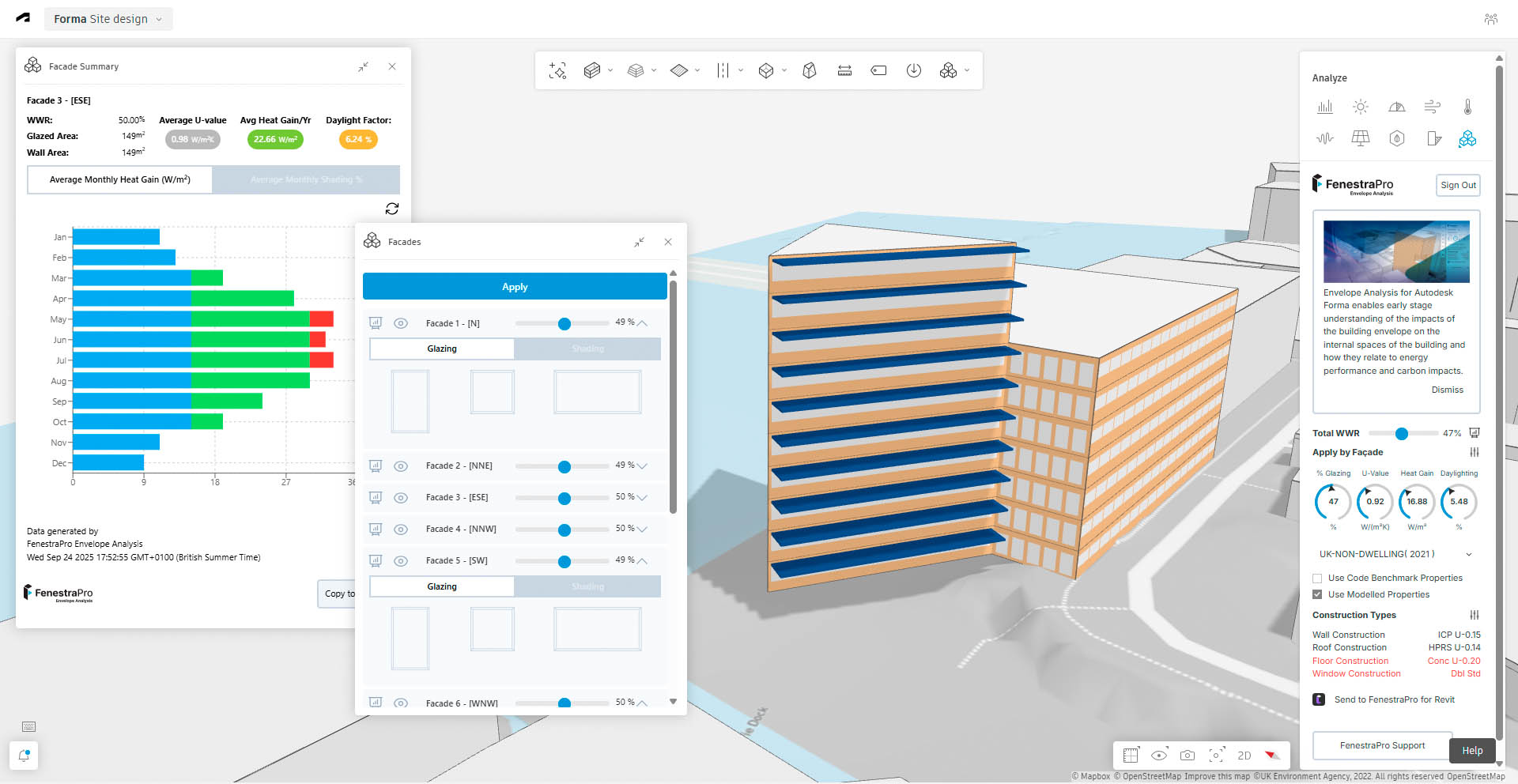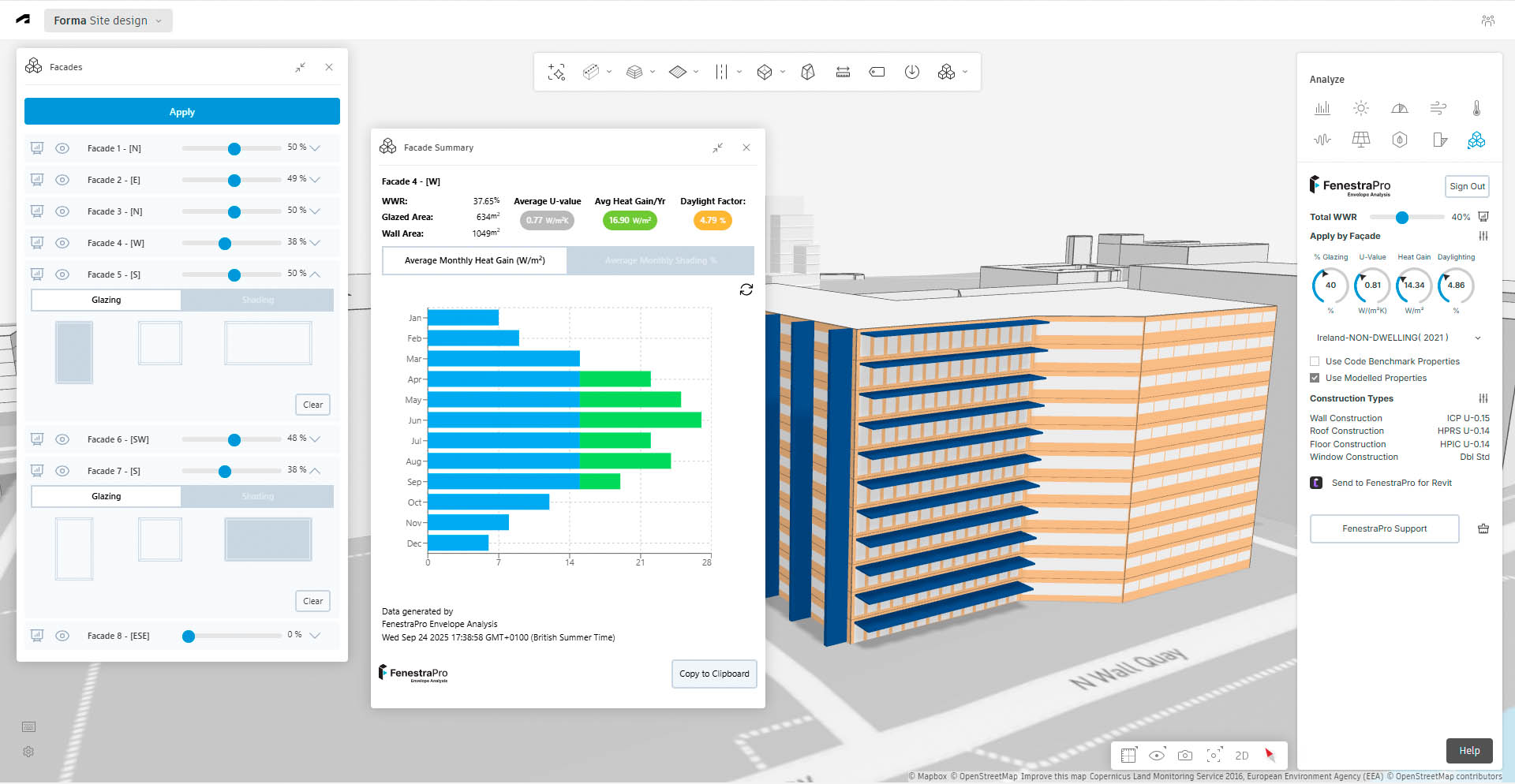FenestraPro offers a façade design optimisation tool for Revit and an envelope analysis tool for Forma that, when combined, can be used in workflows to create sustainable, detailed designs, writes Martyn Day
The building envelope has always been one of architecture’s most demanding battlegrounds. A façade is expected to satisfy multiple, often conflicting requirements. It must express design intent, meet performance targets for energy efficiency, comfort and daylight, and comply with regulations.
Traditionally, assessments to ensure these requirements are met have been left until late on in projects, once a design is largely fixed and alterations become expensive.
Dublin-based FenestraPro was created to address this issue, giving architects direct access to façade performance tools inside of their existing BIM workflows and when their decisions can most optimally influence outcomes.
Established in 2012 by technologists Simon Whelan and Dave Palmer, FenestraPro emerged from a frustration with digital analysis tools that were either too specialist for day-to-day design work or too disconnected from the platforms that architects actually use.
Find this article plus many more in the September / October 2025 Edition of AEC Magazine
👉 Subscribe FREE here 👈
The goal was to bring performance data into the design process itself, enabling architects to weigh the consequences of their choices while still sketching and modelling.
Today, FenestraPro is used by international firms such as AECOM, Jacobs and HKS, where architects and engineers rely on it to help close the gap between aesthetic intent and energy performance.
Face value
FenestraPro’s technology centres on façade analysis and offers deep integration with Autodesk environments. Its best-known product, FenestraPro for Revit, runs as an add-on and allows users to test glazing proportions, shading devices and material selections without leaving their BIM model.
A partner application extends similar functionality into Autodesk’s emerging Forma conceptual design platform, enabling performance analysis from the massing stage onwards. In this way, designers can quickly evaluate how orientation, window-to-wall ratios or shading strategies will affect daylight levels and energy use.
Instead of waiting on external reports, the system provides immediate feedback, with colour-coded surfaces and dynamic charts that highlight potential problem areas such as glare or excessive solar gain.
The software deliberately avoids imposing the heavy computational demands associated with full building simulation tools. Instead, it delivers a lightweight, responsive engine designed for iteration.
This makes it possible for users to compare multiple façade options in quick succession, guiding design choices before geometry becomes too fixed. The package also incorporates a database of more than a thousand glazing products, complete with accurate thermal and solar properties. Recent integrations, such as a link with Vitro Architectural Glass, allow data from manufacturers’ specification platforms to flow directly into the FenestraPro environment, grounding analysis in real-world products rather than generic assumptions.
As projects evolve, the software continues to add value. It supports detailed façade modelling inside Revit, from panelisation through to mullion layouts, while maintaining live performance feedback.
One notable feature is its ability to identify errors or weaknesses in BIM energy models – issues that can compromise downstream analysis. By flagging these early, the tool ensures that data exported from Revit is both reliable and compliant. Reports and outputs can then be generated for a range of uses, from compliance submissions to client presentations.
Design teams can evaluate options in minutes, not days, which accelerates iteration and avoids costly late-stage changes. Building owners get the assurance that the building envelope has been optimised for operational energy consumption and improved occupant comfort. Meanwhile, architects can have greater confidence that their aesthetic choices will work in harmony with performance/ sustainability requirements.
Connecting the dots
FenestraPro does not aim to replace engineering-grade simulation packages. Instead, it focuses on providing architects with the early intelligence they need to make smart façade decisions. By connecting the dots between early-stage exploration in Forma and detailed design in Revit, the platform promotes a joined-up approach to performance.
With sustainability targets becoming stricter and clients demanding more accountability, tools that embed envelope analytics into mainstream BIM workflows are gaining in importance.
FenestraPro’s strategy is to complement existing design environments, rather than reinvent them, positioning itself as a pragmatic but powerful partner in the pursuit of sustainable architecture.
Prices start at $29 per month for Envelope Analysis in Forma and $149 per month for a Premium offering, which adds Revit integration, detailed thermal analysis, carbon benchmarking, model checking and export tools. Discounts are available for teams.

